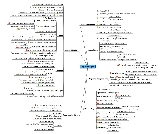
Direct inguinal hernia
Encyclopedia
The direct inguinal hernia, a type of inguinal hernia
, enters through a weak point in the fascia
of the abdominal wall, and its sac is noted to be medial to the inferior epigastric vessels
. Direct inguinal hernias are the same in men and women.
A direct inguinal hernia protrudes through a weakened area in the transversalis fascia
near the medial inguinal fossa
within an anatomic region known as the inguinal or Hesselbach's triangle, an area defined by the edge of the rectus abdominis muscle
, the inguinal ligament and the inferior epigastric artery. These hernias are capable of exiting via the superficial inguinal ring
but, unlike indirect inguinal hernia
s, they cannot move into the scrotum
.
When a patient suffers a simultaneous direct and indirect hernia on the same side, the result is called a "pantaloon
" hernia (because it looks like a pair of pants, with the epigastric vessels in the crotch), and the defects can be repaired separately or together.
Since their abdominal walls weaken as they age, direct hernia tends to occur in the middle-aged and elderly. This is in contrast to indirect hernias which, although their etiology includes a congenital component, can occur at any age
Inguinal hernia
An inguinal hernia is a protrusion of abdominal-cavity contents through the inguinal canal. They are very common , and their repair is one of the most frequently performed surgical operations....
, enters through a weak point in the fascia
Fascia
A fascia is a layer of fibrous tissue that permeates the human body. A fascia is a connective tissue that surrounds muscles, groups of muscles, blood vessels, and nerves, binding those structures together in much the same manner as plastic wrap can be used to hold the contents of sandwiches...
of the abdominal wall, and its sac is noted to be medial to the inferior epigastric vessels
Inferior epigastric vessels
In human anatomy, inferior epigastric vessels refers to the inferior epigastric artery and inferior epigastric vein....
. Direct inguinal hernias are the same in men and women.
A direct inguinal hernia protrudes through a weakened area in the transversalis fascia
Transversalis fascia
The transversalis fascia is a thin aponeurotic membrane which lies between the inner surface of the Transversus abdominis and the extraperitoneal fascia....
near the medial inguinal fossa
Medial inguinal fossa
The medial inguinal fossa is a depression located within the inguinal triangle on the peritoneal surface of the anterior abdominal wall between the ridges formed by the lateral umbilical fold and the medial umbilical ligament, corresponding to the superficial inguinal ring.-External links: -...
within an anatomic region known as the inguinal or Hesselbach's triangle, an area defined by the edge of the rectus abdominis muscle
Rectus abdominis muscle
The rectus abdominis muscle, also known as the "six pack", is a paired muscle running vertically on each side of the anterior wall of the human abdomen . There are two parallel muscles, separated by a midline band of connective tissue called the linea alba...
, the inguinal ligament and the inferior epigastric artery. These hernias are capable of exiting via the superficial inguinal ring
Superficial inguinal ring
The superficial inguinal ring is an anatomical structure in the anterior wall of the human abdomen. It is a triangular opening that forms the exit of the inguinal canal, which houses the ilioinguinal nerve, the genital branch of the genitofemoral nerve, and the spermatic cord or the round ligament...
but, unlike indirect inguinal hernia
Indirect inguinal hernia
An indirect inguinal hernia is an inguinal hernia that results from the failure of embryonic closure of the deep inguinal ring after the testicle has passed through it. Like other inguinal hernias, it protrudes through the superficial inguinal ring...
s, they cannot move into the scrotum
Scrotum
In some male mammals the scrotum is a dual-chambered protuberance of skin and muscle containing the testicles and divided by a septum. It is an extension of the perineum, and is located between the penis and anus. In humans and some other mammals, the base of the scrotum becomes covered with curly...
.
When a patient suffers a simultaneous direct and indirect hernia on the same side, the result is called a "pantaloon
Pantaloon
Pantaloon or Pantaloons may refer to:*Pantaloons, a style of trousers*Pantaloon Retail India, a large retailer in India*The Pantaloons, an English touring theatre company*Pantaloon, a character in the Harlequinade-See also:...
" hernia (because it looks like a pair of pants, with the epigastric vessels in the crotch), and the defects can be repaired separately or together.
Since their abdominal walls weaken as they age, direct hernia tends to occur in the middle-aged and elderly. This is in contrast to indirect hernias which, although their etiology includes a congenital component, can occur at any age

